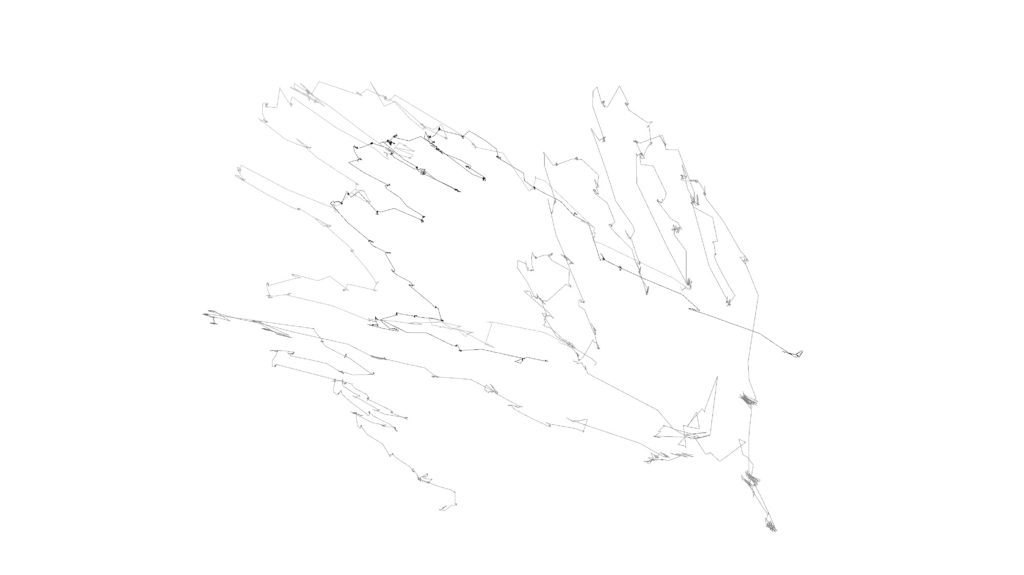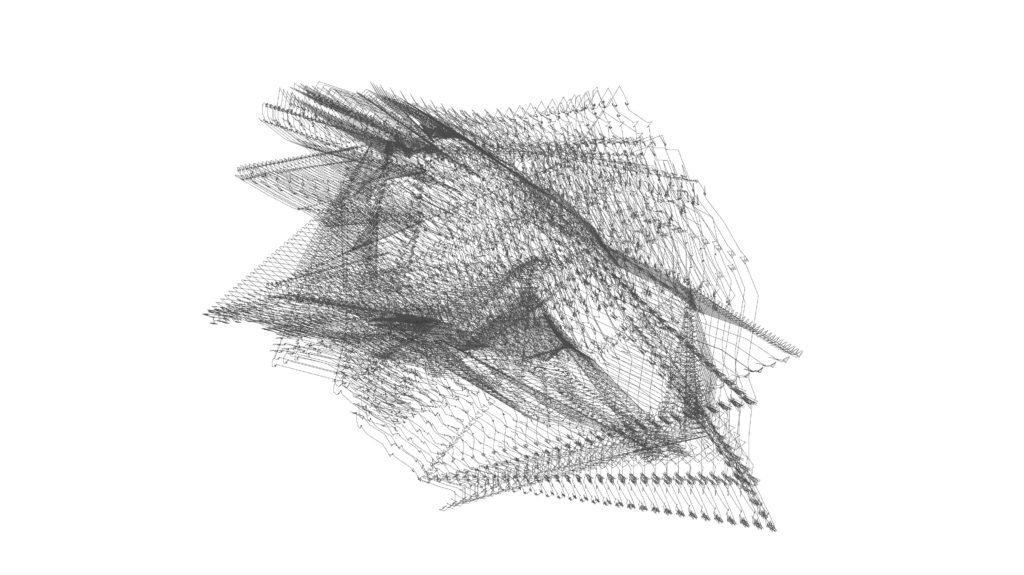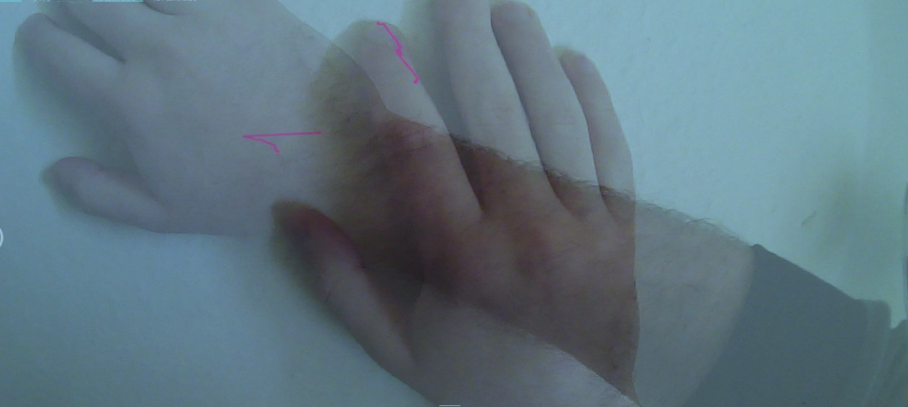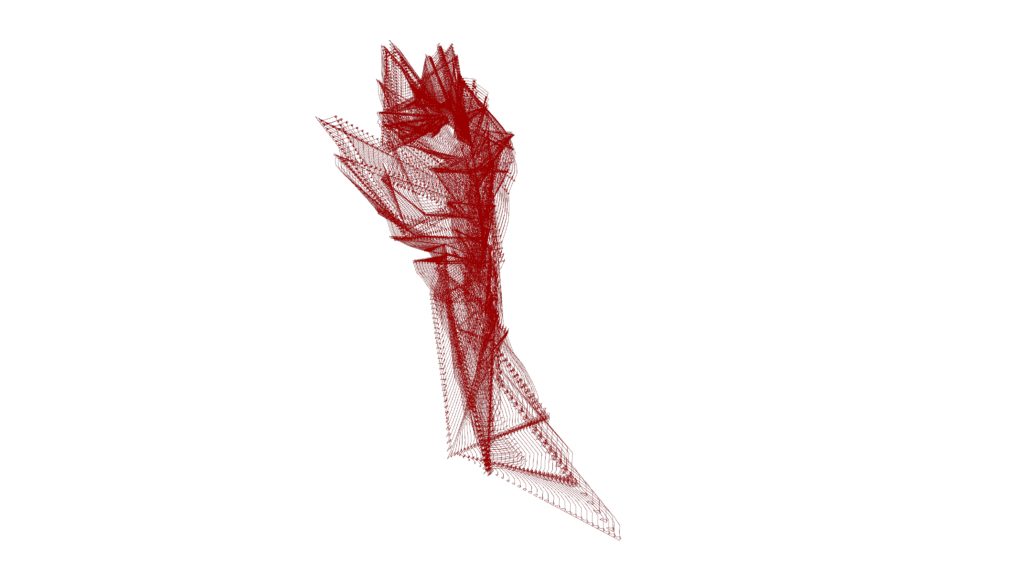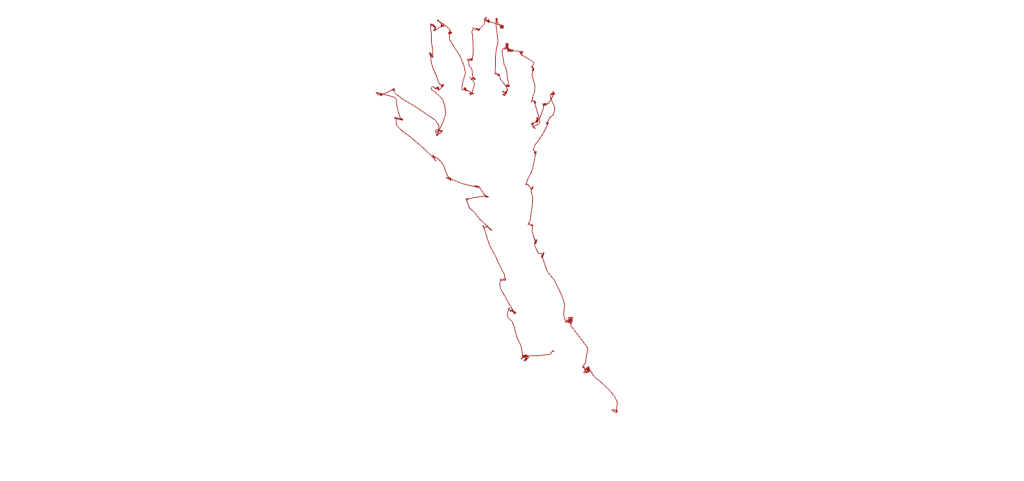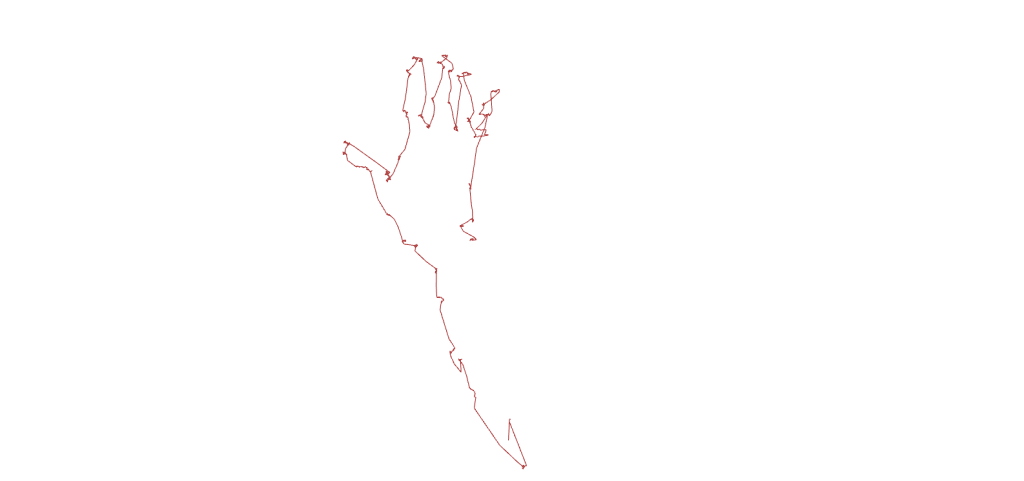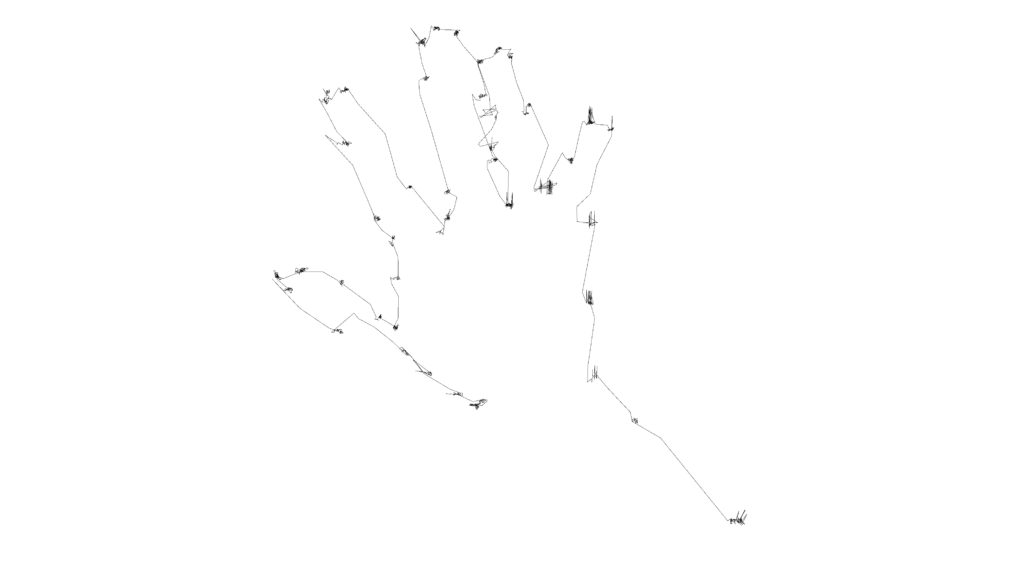
Figure 29: An eye-drawing of my hand resulting from Video 2
In view of treating Figure 29 as a drawing, there are two particular qualities which need to be discussed. The first relates to the biology of the eye, in so far as it being an organ which is constantly in motion, even when we focus on a particular point within our worldview. The linear quality within Figure 29 is therefore made up of long linear stretches (saccades) and smaller accumulation of lines at specific points (fixations). Cognitive science states that no vision occurs during saccades motion, as these consist in fast movements travelling from point A to point B. On the other hand, fixations are resting points where the gaze focuses and acquires visual information.
While eye drawing, my resulting eye-drawing is therefore inevitably influenced by this biology, and my contouring travels in small ‘steps’ along the edges of my hand. This contrasts to the fluidity present when hand drawing.
The second important characteristic concerns the compositional element within the eye-drawing. Since I do not have any visual reference to the formation of the eye-drawing itself while I am eye drawing, there are no compositional decisions taken during the performative act. This decision comes into place once I assume the position of an editor, and are taken through the viewport display view of software like Rhino3D.
These two main characteristics apply to all of my eye-drawings which have been processed so far. This is also my interpretation of them, and the practice itself will lead me into further necessary knowledge concerning the restriction of my body, properties of my eye movements, properties of the technology (both hardware and software) and the eye-drawings themselves among others.
